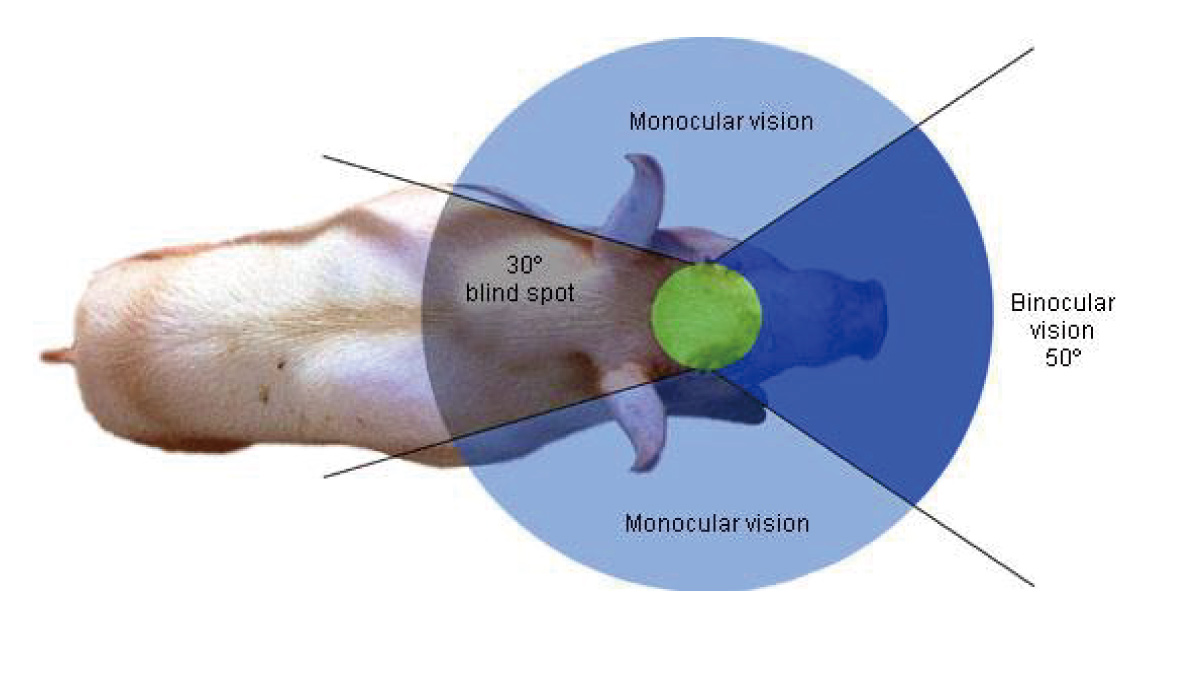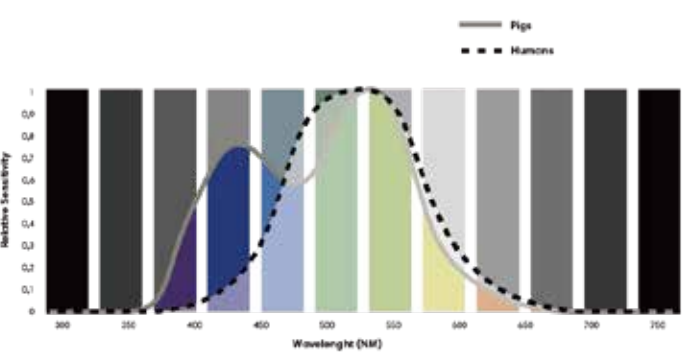WHAT IS IMPORTANT IN SWINE PRODUCTION REGARDING SWINE LIGHTING?
Swine Lighting, swine have a panoramic vision of 330º, with a preference for monocular vision, which helps them detect danger more effectively. However, their relatively small binocular vision limits their ability to accurately estimate distances, presenting a challenge in spatial awareness despite their overall wide field of view, as showed in Figure 1.

Interactive POS Displays
The visible spectrum refers to the portion of the electromagnetic spectrum that is perceivable by the human eye, commonly known as visible light. Different wavelengths within this spectrum correspond to various colors, with red representing the longest wavelength and violet the shortest. Notably, the visible spectrum perceived by humans differs significantly from that of swine, as illustrated in Figure 2.

How does appropriate swine lighting impact the welfare and behavior of swine
Visible Spectrum of Swine:
Swine have a visible spectrum ranging from 380 nm to 694 nm, with peak sensitivities at 439 nm (blue) and 556 nm (green).
Spectral Sensitivity:
There are two types of spectral sensitivity:
• Cone Sensitivity: Based on the types of cones and rods in the eyes.
• Behavioral Responses: More relevant for assessing the welfare and performance of swine.
Welfare and Performance:
To effectively enhance swine's welfare and performance, it is crucial to focus on spectral sensitivity related to their behavioral responses.

Benefits of Adapting Light
By adjusting lighting to align with the swine's visible spectrum:
• Vision Improvement: swine's vision will be enhanced.
• Behavioral Enhancements: This can lead to better social behavior and more effective use of their environment.
• Stress Reduction: Improved lighting conditions contribute to decreased stress levels in swine.

Swine Lights
Swine lights T16, T16 Tri-proof lights are an excellent solution specifically designed for environments requiring high-pressure washing. Made from special plastic with a waterproof structure and ceramic light source, their durability reduces maintenance costs, while their long lifespan and energy efficiency provide superior lighting, especially suitable for swine farms, industrial sites, and food processing facilities.
